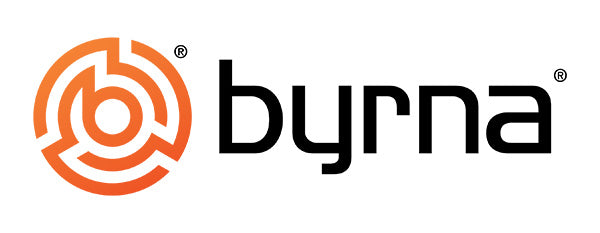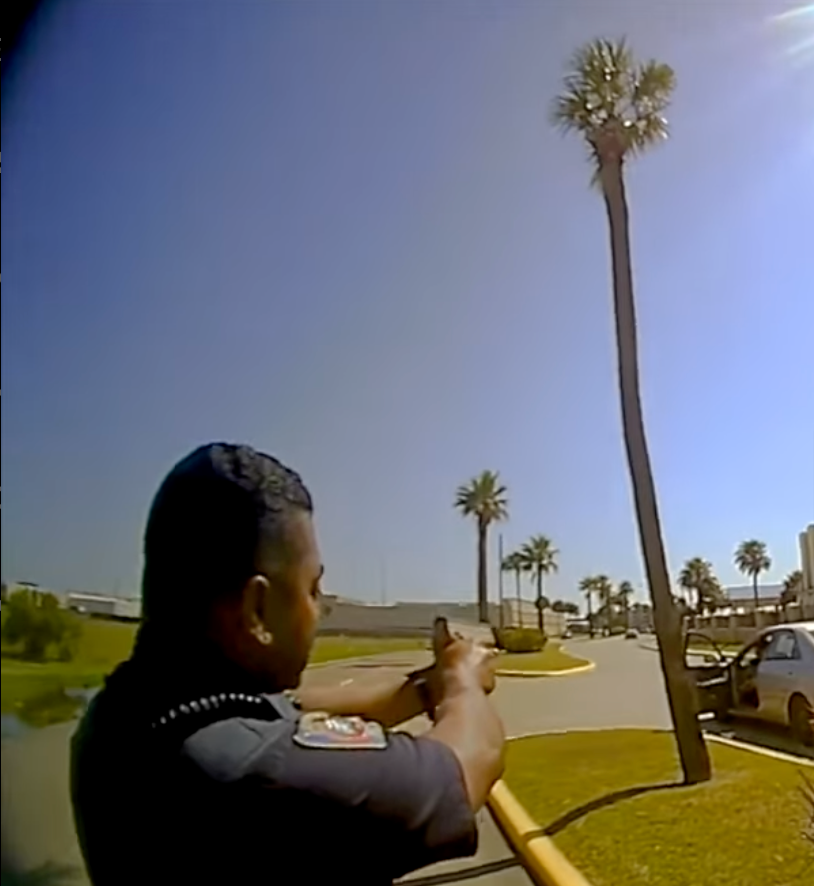
It's completely possible to resolve aggressive conflicts without violence - it's called de-escalation, and there are some pretty helpful techniques here.
Can you handle an angry customer, a tense coworker, or a personal fight without this knowledge? Well, de-escalation is a big part of respect in Canadian life because it helps make sure everyone gets along better. Plus, imagine how much safer and more balanced our communities could be with these skills in play.
In some cases, de-escalation helps prevent situations from getting worse. When you work for this, you protect yourself and everyone around you. When you stop violence, it's just the beginning - but when you calm someone down, you keep the peace and build trust. You also really show respect for others and create a safer and more pleasant environment for everyone.
Let's talk about how to build these skills!
Table of Contents
What Are De-Escalation Techniques?
De-escalation calms down conflicts and stops them from getting worse or violent.
You should start by calming people, give feedback on their issues, and resolve things peacefully - this helps everyone stay safe and avoids unnecessary confrontations. Always remember to stop things from getting out of hand and help make everything calmer. When conflicts flare up, these techniques can keep them from becoming full-blown arguments or physical fights.

Imagine you're at work, and a customer starts getting really upset. You should stay calm and just listen to them. It's also relevant for healthcare, law enforcement, and in your interactions. Actually, these techniques can help you in any situation.
Also, when you show someone you get their frustration, it can reduce their anger quite a bit! Have you seen that just being heard makes you feel better even if the problem isn't fixed yet? That's empathy working its magic.
Active listening is also helpful - take a look at what the other person says and repeat back what you understand - this shows you're invested in resolving the issue. Here it can make the person feel more heard and less defensive which helps to calm things down.
Remember that non-verbal cues matter too. Use open body language, keep a calm tone, and steer clear of gestures that seem aggressive. But if you walk up calmly with open gestures it's easier to have a peaceful conversation.
You always need to keep yourself calm and composed. If you lose your cool, the situation can get worse faster. Respect personal space, as no one likes to feel crowded when they're upset. Think about how you'd feel in a tight space while already angry. It would just make things worse.
When you set clear boundaries and provide choices, it helps manage situations without making the other person feel cornered. You could try saying things like, "I'm here to help you. Let's figure this out together." This makes the person feel in control and can calm things down quite a bit.
In real-world scenarios, these techniques really work. In customer service, active listening and tackling issues without putting someone on hold can ease frustrations. In healthcare, starting with calm, empathy-based interactions has shown positive results in calming down crises. These methods have shown their worth in different contexts.
Use Calm Body Language and Tone
Your body language and voice will really change how things go in a tense situation. You should show open palms - this tells a non-threatening and open attitude that can help ease tension.
Remember your posture, too. Always keep a relaxed posture with uncrossed arms and a balanced upright stance - this shows calmness. You'll look more approachable that way. Just try talking to someone who's relaxed versus someone who's tense and defensive. Which do you prefer? Exactly!
Afterward, you should think about the tone of your voice. You could use a calm and steady voice - you'll see how helpful it is. A relaxing voice relaxes people. It seems obvious but that's the goal here.
Take a look at your pitch, volume, and rate of speech as well. If you keep these moderate and controlled, you'll find your message is received without adding stress to the conversation. Think of it like seasoning in a dish - the right amount makes it just right.

Start with being self-aware. It's important to remember your own body language and voice. Also, active feedback is helpful - you should really tune into the other person's voice and body language. When you do this, you'll get a better sense of where they're coming from.
To help, practice mindfulness techniques like deep breathing - this helps you manage your own stress and stay calm. With positive and respectful language, you'll create a space where open and honest communication can flourish.
Experts agree on this too. Mehrabian's communication model shows a big chunk of communication is non-verbal. When you master these cues, you'll see it matters! Gentle Response LLC's de-escalation training shows the value of practice and real-time feedback in honing these skills.
If you practice these methods, you're likely to really help with your communication. So how about we talk about how you can listen actively next?
How Do You Listen Actively?
Active feedback is one of the best ways for you to calm things down. You need to grasp the full message of the speaker and respond thoughtfully. So here, how can you put this into practice?
Just be mentally present. Because distractions are the enemy, you need to focus completely on the person talking to you. Maybe it sounds easy, but it's a big first step. Listen closely. Take a look at their tone, body language, and facial expressions - these will help you gauge the full range of their emotions and intentions.
Eye contact is huge - you show you're really involved by looking directly at them and taking the conversation really seriously. Also, combine this with nodding and saying things like "I get it" to show you're following along with them. Maybe try mixing it up a bit and empathize with them. Empathy and respect is everything here.
Don't interrupt! Let the speaker just finish what they're saying without jumping in - this shows respect and can help them feel heard. So you should think about what you've heard. You can paraphrase their points to show you're paying attention.

Try to keep your body language open as well. Sometimes, slumping or crossing your arms could send the wrong signal to the other person. Always keep an open and inviting posture. When in conversation, repeat helpful points to show you get it. You can ask open-ended questions like "What do you think could be a potential answer?" This leads to better responses and shows that you value their point of view.
Experts agree that active feedback works well for cooling things down. Research shows people actually feel more at ease with this strategy, which leads to less heated exchanges. Think about customer complaints. An agent who listens actively and knows that the concern can more easily solve issues - this sometimes results in happier customers.
At work, active feedback can be a plus. Here, you can learn about different views and create a more team-friendly area by handling feedback the right way. In public, empathetic feedback from authorities can diffuse confrontations - this makes everyone feel their issues are being taken very seriously.
Use a calm and respectful tone. Your body language should match your words to show you're involved. Empathy is important here to know the emotions behind the words and respond the right way - this really builds trust and opens the door for better dialogue.
Sometimes, you really need to know when to walk away.
Know When to Walk Away
You need to know when a situation can't be calmed down anymore. Sometimes you should know when it's best to walk away. Sometimes you could note someone getting more and more aggressive or even making threats. These signs really show that things can spin out of control.
Imagine a customer at your workplace shouting and clenching their fists. You should call security or a supervisor to stay away from physical harm. It's not about handling it yourself because keeping safe matters most. Think of a police officer dealing with somebody who has a mental health crisis. When things get too dangerous, they need to back off and call for backup. When you do this, you can stay away from the need for force. When you train, safety shows you that walking away isn't weak - it's being smart.

Always communicate calmly when leaving a tough situation. Remember to keep your tone steady to stay away from making things worse. Your body language matters too. Use open and relaxed gestures to show you're not a threat. When you plan your exit, always make sure there's a safe space between you and the person who's upset.
Get your coworkers or security staff to help you leave safely. Teamwork really helps in these moments! Remember to look out for warning signs like verbal abuse and physical anger so you can walk away faster. If talking isn't calming things down, then move to create some physical space.
But your safety is the most important thing. When you walk away could be the safest choice if things heat up too much. So always have a plan ready. Know your escape routes and who you can trust for help - that way you won't be left looking for an answer in a difficult place.
Well, now, let's see if humor can help cool down a heated situation.
Can Humor Help in De-Escalation?
Humor helps quite a bit in easing tension during conflicts. Ever seen how a well-timed joke can lighten the mood? Sometimes, you can imagine a humor reset button - it breaks power struggles and makes people reconnect. It feels like tapping refresh during a heated talk. Sometimes, when you laugh, it can ease disagreements and show everyone a lighter view of things.
When you laugh, it also makes your body feel great. Naturally, your body releases feel-good chemicals like endorphins and cuts back on stress hormones like cortisol. You've probably seen this when sharing a hearty laugh with friends - it just makes you feel relaxed and at ease. This happens because laughter bonds people and gives them a break from stress, which helps keep relationships strong during tough times.

But you have to remember that humor has two sides. Used right, it cools things down. Sadly, if used wrongly, it can make things worse. Most of the time, you've probably seen a joke fall flat or even come across as an attack - that's no fun. Be mindful of the mood and timing before making a joke because this avoids misunderstandings and keeps relationships stable.
If you target yourself or the situation, it works better in humor. Sometimes, self-deprecating jokes can help lift the mood without offending anyone.
The timing really matters here - cracking jokes when emotions are high can backfire unless you know it will be well-received. I think of it like adding salt - too much or too little spoils the dish.
In real life, you can look at examples to get a clearer idea. In a Harvard Kennedy School course, humor was used at just the right moments after difficult activities to keep students involved - this shows how humor can work positively! But poor timing can create issues. Just to give you an example, take the story of Michelle calling her husband a "foot warmer" - it sounded funny but caused tension because he was already feeling uncomfortable.
Protect Yourself and Your Family
We've talked about some pretty helpful ways to handle conflicts without inflaming them. These techniques are useful everywhere, too. Imagine a family dinner where everyone's voices are heard and respected, or a friendly debate that remains just that - friendly!
How do you think these skills could change the process in your own life? You could find it makes a huge difference. And more importantly, you're preventing violence and people getting hurt. You can feel good about that.

On that topic, while we start with de-escalation and peaceful conflict resolution, it's equally helpful to have reliable self-defense options. Sometimes, the situation calls for a different kind of preparedness - this is where we at Byrna Canada come into play.
Specializing in less lethal self-defense services, Byrna Canada has a variety of products customized specifically for Canadian residents. From pistols and rifles to CO2 cartridges and sirens, we have everything you need for peace of mind.
The best part is that no background checks are needed. Plus, our products are legal in all ten provinces, and we ship them straight to your door. So, why not take a bit to check out our full catalog? Protect yourself and your family with useful and less lethal tools. Make sure you are completely prepared for whatever comes your way!




